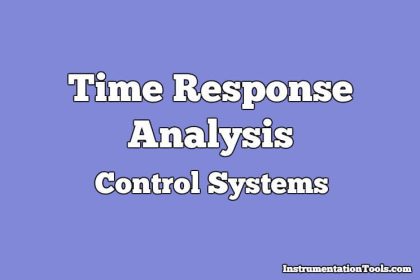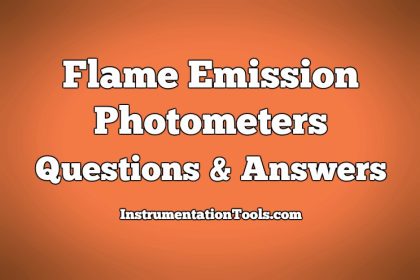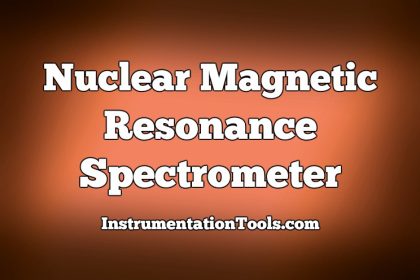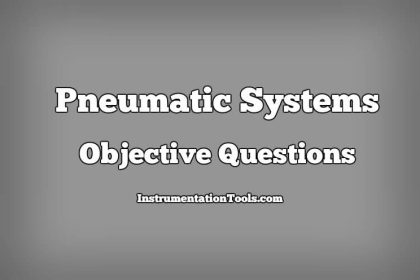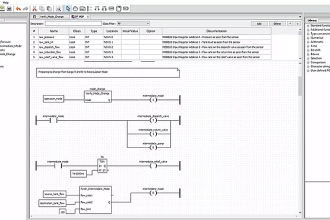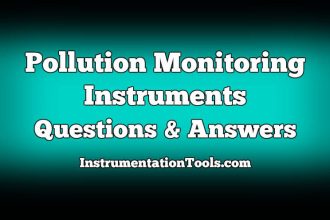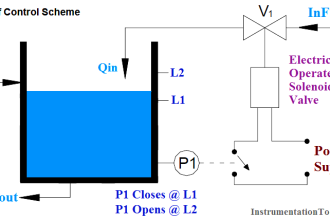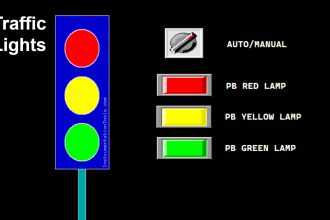Pole Placement by State Feedback
1. ______________ is not a final control element.
a) Control valve
b) Potentiometer
c) Electro-pneumatic converter
d) Servomotor
Answer: b
Explanation: Control element refers to the various blocks in the whole control process and the various control elements can ce controller as control valve, potentiometer, servomotors and tachometers but potentiometer is not the final control element.
2. Which of the following is the definition of proportional band of a controller?
a) The range of air output as measured variable varies from maximum to minimum
b) The range of measured variables from set value
c) The range of measured variables through which the air output changes from maximum to minimum
d) All of the mentioned
Answer: c
Explanation: Proportional band of controller is the range of measured variables through which the air output changes from maximum to minimum.
3. In pneumatic control systems the control valve used as final control element converts
a) Pressure signal to electric signal
b) Pressure signal to position change
c) Electric signal to pressure signal
d) Position change to pressure signal
Answer: b
Explanation: In pneumatic control system the control force is the air and and can be used as final control element converts the pressure signal to position change.
4. Pressure error can be measured by which of the following?
a) Differential bellows and strain gauge
b) Selsyn
c) Strain gauge
d) Strain gauge and potentiometer
Answer: a
Explanation: Pressure error is the error that is caused due to change in the pressure and the error can be measured by differential bellows and strain gauge which is by the change of dimensions.
5. Which of the following devices is used for conversion of co-ordinates?
a) Microsyn
b) Selsyn
c) Synchro-resolver
d) Synchro-transformer
Answer: c
Explanation: Dimensions of the container can be changed by conversion of the coordinates and this can ne done with the help of the synchro-resolver.
6. The effect of error damping is to
a) Provide larger settling lime
b) Delay the response
c) Reduce steady state error
d) None of the mentioned
Answer: c
Explanation: Error damping refers to the error that is caused by the damping in the system and the effect of this error damping is that it reduces the steady state error and gain of the system reduces.
7. Technique gives quick transient and stability response
a) Root locus
b) Bode
c) Nyquist
d) Nichols
Answer: a
Explanation: Root locus is the locus of the system that is drawn by the change in the gain with respect to the frequency and this technique gives the quick transient and stability response of the system.
8. A phase lag lead network introduces in the output
a) Lag at all frequencies
b) Lag at high frequencies and lead at low frequencies
c) Lag at low frequencies and lead at high frequencies
d) None of the mentioned
Answer: c
Explanation: A phase lag lead network is the network that is similar to the differentiator and it is used to increase the speed response and increases the stability of the system and this introduces lag at low frequencies and lead at high frequencies.
9. Which of the following is the non-linearity caused by servomotor?
a) Static friction
b) Backlash
c) Saturation
d) None of the mentioned
Answer: c
Explanation: Non-linearity is the irregular variation in the two parameters of the servomotor and this is caused by the saturation in the servomotor.
10. When the initial conditions of a system are specified to be zero it implies that the system is
a) At rest without any energy stored in it
b) Working normally with reference input
c) Working normally with zero reference input
d) At rest but stores energy A
Answer: a
Explanation: Zero initial condition refers to the condition in which the stored energy is zero and hence the system implies that the system is at rest without any energy stored in it .

